Our resources page offers homeowners, builders, architects, and others in the building community helpful information on building codes, high performance building techniques, health & safety, and more.
Envelope
Advanced Framing
Advanced framing saves time, money, and energy. If you are planning a new construction project, consider using advanced framing practices and take advantage of the many benefits.
DOE Building Technologies Program – Air Leakage Guide
This guide is a resource for understanding the new air leakage requirements in the 2012 IECC and offers suggestions on how these new measures can be met. It provides information from Building America’s Air Sealing Guide, best practices and case studies. The 2012 IECC and a few International Residential Code (IRC) requirements are referenced.
Types of Insulation
The US Department of Energy provides a summary of the different types of insulation, their appropriate applications, and tips for choosing the right installation professional.
Insulation Installation Receives RESNET Grade 1
The DOE Building America Solution Center provides information on how to achieve RESNET Grade 1 insulation installations. It is often the case that gaps, voids, and kinks often create uneven insulation levels and reduce the effectiveness of the material.
Air Distribution Systems
How to Get Your Ducts Inside the Building Enclosure
Allison Bailes, Ph.D., of Energy Vanguard discuss effective strategies for placing the ductwork inside conditioned spaces to reduce heating and cooling energy loss.
DOE Building America – Residential Duct Systems for New and Retrofit Homes
Duct air leakage results in significant energy losses. This document discusses the importance of properly installed duct systems and best-practice strategies.
Heating, Cooling, & Ventilation
Learn the Lingo – Air Conditioning Terminology and Tidbits
Allison Bailes, Ph.D., of Energy Vanguard explains commonly used terms in the HVAC industry. What is a boot and what does EER stand for? Learn the language so you can understand what your HVAC specialist is talking about.
Benefits of a Ductless Air Conditioner
Considering going ductless? This article lists eight benefits of ductless air conditions, which are a great option for additions, bonus rooms, rooms with special cooling needs (such as sun rooms), or in some cases for smaller houses with open floor plans.
Ductless Heat Pumps (aka Mini-Splits) and their benefits
This article explains the advantages and disadvantages of ductless air conditioners.
4 Tips on HRV/ERV Installation
Proper installation of mechanical ventilation systems is critical for making sure the system performs as planned. A poorly installed system can lead to indoor air quality issues and excessive energy use. Zehnder America offers tips for proper installation.
Humidity Control
The Biggest AC Misconception that Leads to Sticky Situations
In this blog, E3 explains how oversized HVAC units can lead to humidity issues. This is a common issue that can be mitigated with proper sizing and consideration for the use of the space.
Crawlspaces
Guide to Closing and Conditioning Ventilated Crawlspaces
This how-to guide explains the issues and concerns with conventional vented crawlspaces and outlines prescriptive improvement measures that promote healthier, more durable spaces.
Closed Crawlspaces – An Introduction to Design, Construction and Performance
This documents provides a general guide for creating sealed crawlspaces in a hot humid climate.
Healthy Home
Where should I place my fire alarms?
The National Fire Protection Association (NFPA) and the Consumer Product Safety Commission (CPSC) recommend several locations to place a smoke and carbon monoxide alarm.
Residential Air Cleaners – A Technical Guide
This EPA guide provides a technical reference for residential home indoor air quality and is useful to housing design professionals such as architects, builders, or contractors, as well as public health officials, indoor air quality professionals, and maintenance professionals.
EPA Guide to Air Cleaners in the Home
This guide provides tips for selecting a portable air cleaner and furnace or HVAC filter.
Radon
Building Radon Out: A Step-by-Step Guide on How to Build Radon-Resistant Homes
This subpage of the EPA’s radon site contains an 84-page PDF document detailing how to build radon-resistant homes. This resource is useful for those seeking a deeper understanding of radon-resistance, and it may be particular helpful for people planning on building a new home.
Landlord Responsibility for Radon in Rental Housing
This website provides legal information on tenants’ rights and landlords’ responsibilities regarding radon in rental homes.
National Cancer Institute
The National Cancer Institute emphasizes the link between radon exposure and lung cancer.
National Radon Program Services
This website provides an overview of the dangers and health effects of radon as well as detailed information on radon mitigation and radon resistant new construction (RRNC). The National Radon Program Services website offers perhaps the most holistic overview of important radon-related information.
Tennessee Department of Health
The Tennessee Department of Health provides information about radon with an emphasis on the dangers it presents in Tennessee. Apart from the radon-specific section of the website, the Tennessee Department of Health lists a number of phone numbers and contact information that may be useful for some people.
The National Radon Action Plan
The National Radon Action Plan outlines the framework for reducing radon risk in 5 million homes and saving 3,200 lives annually by 2020. The plan was put together the American Lung Association in collaboration with ten other organizations.
EPA Radon Information
The EPA website provides a hub of radon-related information, including health effects of radon, information for home buyers and sellers, and resources for builders and contractors.
High Performance & Passive House
Doe Building America Solution Center
The Building America Optimized Solution describes a set of building practices necessary to achieve the next step in energy performance for new homes (approximately 30% energy savings above the 2009 International Energy Conservation Code). This package of measures meets and exceeds DOE’s Zero Energy Ready Home (ZERH) program requirements.
Passive House Principals
The Passive House Institute provides many resources for building a Passive House. On this site, you can learn the basics of Passive House design, the primary and secondary benefits, and the performance standards that make Passive Houses what they are.
Passive Solar Home Design
The US Department of Energy provides an introduction to the concepts of Passive House design.
Environmental Health
Collaborative on Health and the Environment
This site provides information on a broad range of environmental health concerns and offers webinars, databases, and other resources for families and professionals.
EWG Tap Water Database
Enter your home’s zip code and find out what’s in your water. The EWG tracks a variety of substances that municipal water companies are not required to test. This site also offers advice on different types of water filters.
Asbestos and Health
Asbestos is found in homes and buildings as a result of its widespread use in the 20th century. However, when asbestos is disturbed, the fibers can become airborne and the mineral can damage the lungs, in some cases leading to lung disease, cancer, or death. Asbestos can be recycled into harmless glass, but it is not a common strategy. Remember, asbestos removal must be done by a professional.
Building Codes
Accelerating the Adoption of Residential Building Code Standards Across Tennessee
This report summarizes the work of a grant completed in partnership with E3 INNOVATE and the USGBC-Tennessee branch. It provides an update on the current adoption of residential codes in Tennessee and discusses some of the challenges the state faces in raising the standard for new homes.
Mastering Building Code Challenges
This document offers a collection of stories that demonstrate how creating strong builder-manufacturer relationships helps to create cost-effective, high performance homes that exceed challenging building codes.
Energy Code Compliance Paths: Which One will Work Best for Your Project?
This document helps builders and architects understand the flexibility of the 2015 International Energy Conservation Code (IECC) and the various paths of compliance
Energy Code Support: Inspecting Attic Insulation
The Washington State University Extension Energy Program offers information on types of insulation and how to determine the insulation level in your attic. The current attic insulation requirement for Tennessee is R-38.
Rebates & Tax Credits
TVA eScore Program
Developed through a partnership between Tennessee Valley Authority (TVA) and your local power company, the eScore Program provides homeowners with a simple way to improve the efficiency of their home. es serves as a Quality Contractor Network (QCN) member. Learn more.
Residential Renewable Energy Tax Credit
Homeowners who have captured all of the low-hanging fruits of energy efficacy and are now ready for solar energy can take advantage of the federal tax credit for residential photovoltaic systems.









